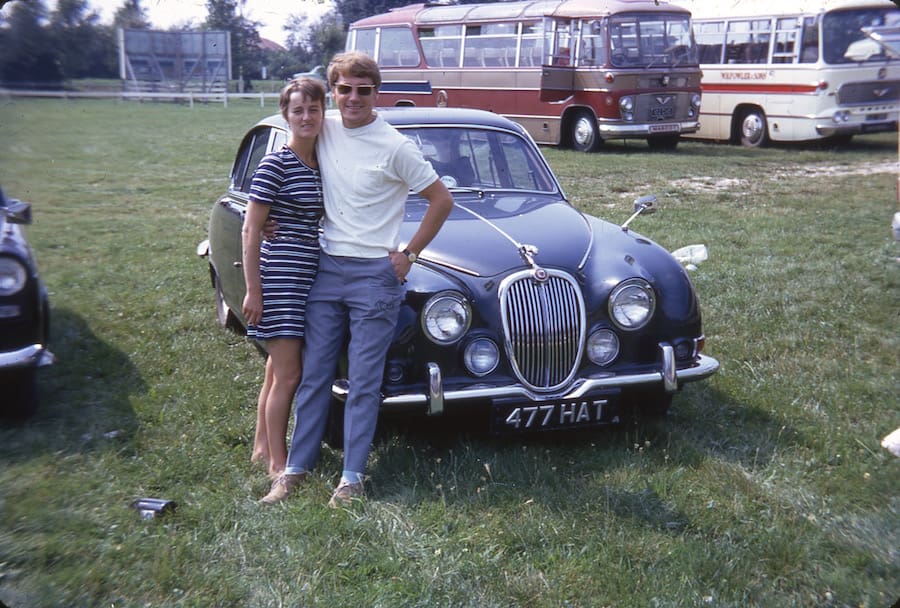“I’m the luckiest man alive!” says 1960s international racer Malcolm Stanton. The 74-year-old Aussie and wife Terri now follow the sun around the country in a fifth-wheel trailer, so mail collection can be iffy, but in April he did receive a government bowel-cancer screening kit. On 30 May, he had a very aggressive cancer cut out and is now in remission, undergoing chemotherapy.
Racing contemporaries and local journalists still rave about Stanton’s style on Manx Nortons at home against Kel Carruthers and John Dodds, and on the Continent he was a top-six GP finisher. Carruthers’ daughter Sharon recalls him having the coolest ‘gypsy’ caravan, complete with a
pot-belly stove.
But in 1968, Stanton switched to Italian machines that needed deep pockets to achieve reliability. He went broke and spent several years back in his trade as a mechanic fixing Jaguars, before returning home with English-born Terri.
Stanton was born in Port Melbourne in 1943 and at 16 used his child endowment money to buy a Triumph Speed Twin, on which he tore around the airstrip-cum-racetrack at Fishermans Bend. He started racing on a BSA B31 and was able to buy a Manx Norton 350 on a ‘pay half now, pay the rest later’ deal. He later added an ex-Trevor Pound Manx 500.
In 1964 he scored a podium with Carruthers and Dodds at Longford (Tasmania), chased Carruthers’ famed Honda four in the Bathurst 350 GP, won the Harvie Wiltshire Trophy in the rain at Ballarat and placed second to Carruthers in the 1964 Qld 350 GP at Lakeside.
Europe beckoned and for three months Stanton worked double nine-hour shifts as an industrial cleaner and painter, banking money at a rate that would have paid for a Manx Norton in 10 weeks.
Stanton cleared his debts, saved the boat fare to England and put aside £600 to contest the Continental Circus. He bought a then ubiquitous Ford Thames van, but later acquired Jack Ahearn’s impressive Bedford and an 18-foot caravan.
“I was the first private entrant to have disc brakes on a 500 Manx and a big caravan.”
Stanton’s first Isle of Man TT at age 22 netted 24th and 25th places. He was seventh in two classes at the East German GP on his all-time favourite circuit, Sachsenring.
Homesickness brought him home, but he saved hard again and had his best international season in 1966, finishing 10th in the IoM 500 TT and fifth in the Finnish 500 GP at Imatra. He returned Down Under at the end of 1966, breaking the lap record, then his leg, at Winton. Nonetheless an earthmoving contractor employed him over the summer.
“Sixty-six was a good year to be in Europe, because there were lots of other guys from Australia and most were doing it with no money – Len Atlee, Doddsie, Kel, Eric Hinton, Jack Saunders and Jack Ahearn. We were all mates. Jack Findlay was there too, but he was quite a reserved bloke and he tended to keep to himself.” (Findlay by that stage had lost a few mates in racing.)
In 1967 Stanton had a third machine, an Aermacchi belonging to his mate Bob Forbes that he rode to sixth place in the Finnish 250 GP.

“Early in 1968 I sold my two Nortons for a total of £785. I wish I hadn’t. I bought a factory ex-Bruno Spaggiari Ducati 350, which was easily as fast as a Manx 500, but it had no handling and no feel in the brakes. There was either nothing or it was trying to pitch you over the handlebars! It needed a new exhaust valve every meeting and I couldn’t afford that.”
He also secured an ex-Mike Hailwood Benelli 250 he found propping open a door at Fron Purslow’s bike shop in Wales.
“When I first saw the bike there was a chassis, the engine and a steel trunk full of spare parts,” Stanton remembers. “I spent the whole of the 1967-68 winter rebuilding it. Mahle had made up some pistons and that, in hindsight, was the big mistake. Those pistons had straight gudgeon pins. Later on I found three tapered gudgeon pins in a packet at the bottom
of the trunk. But at the time, Fron couldn’t remember why the bike had blown up five
years earlier.
“That bike was the biggest disappointment of my life. With some reliability, I could have been top six in the championship.”
But would he do it all again? Of course he would.

By Don Cox











